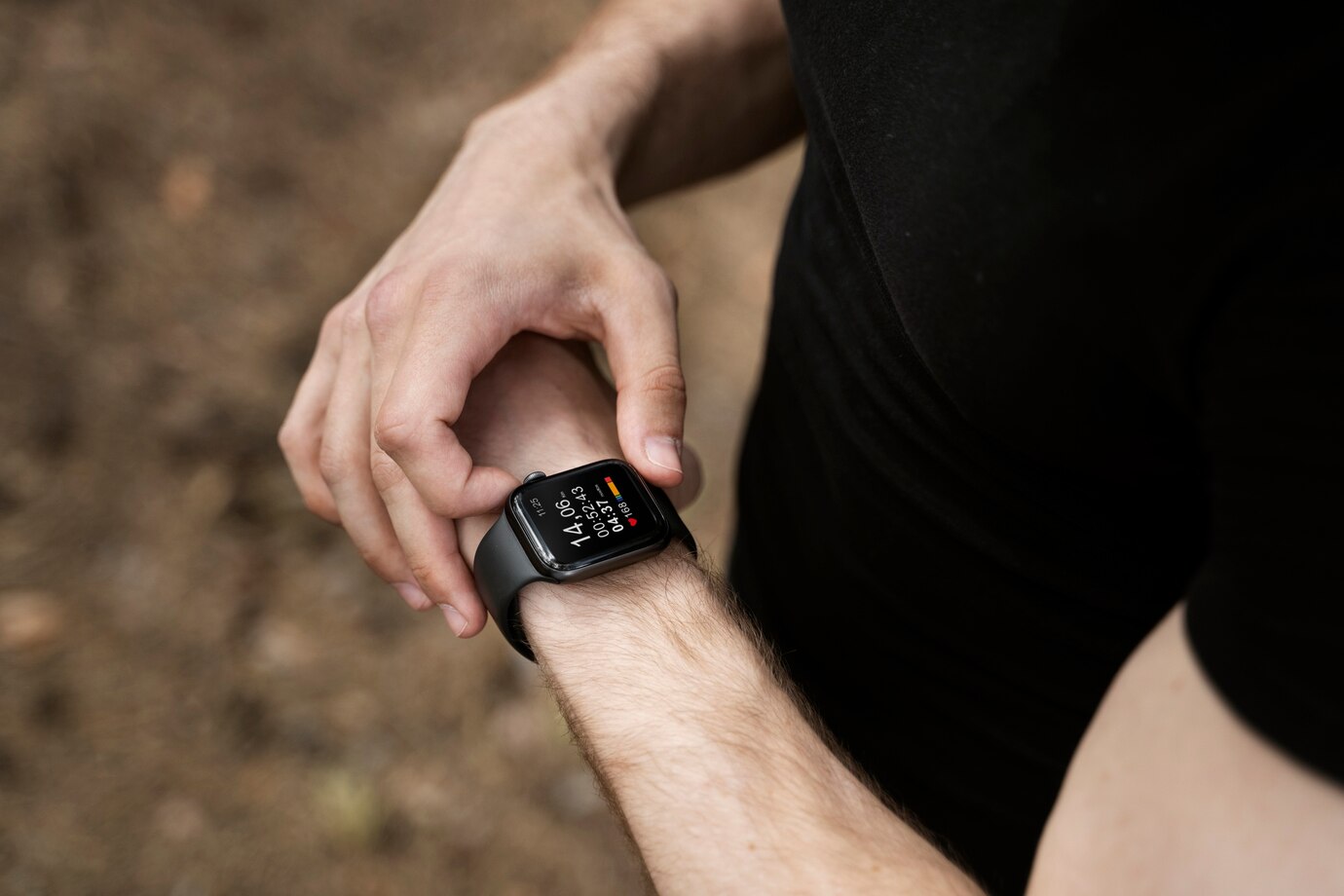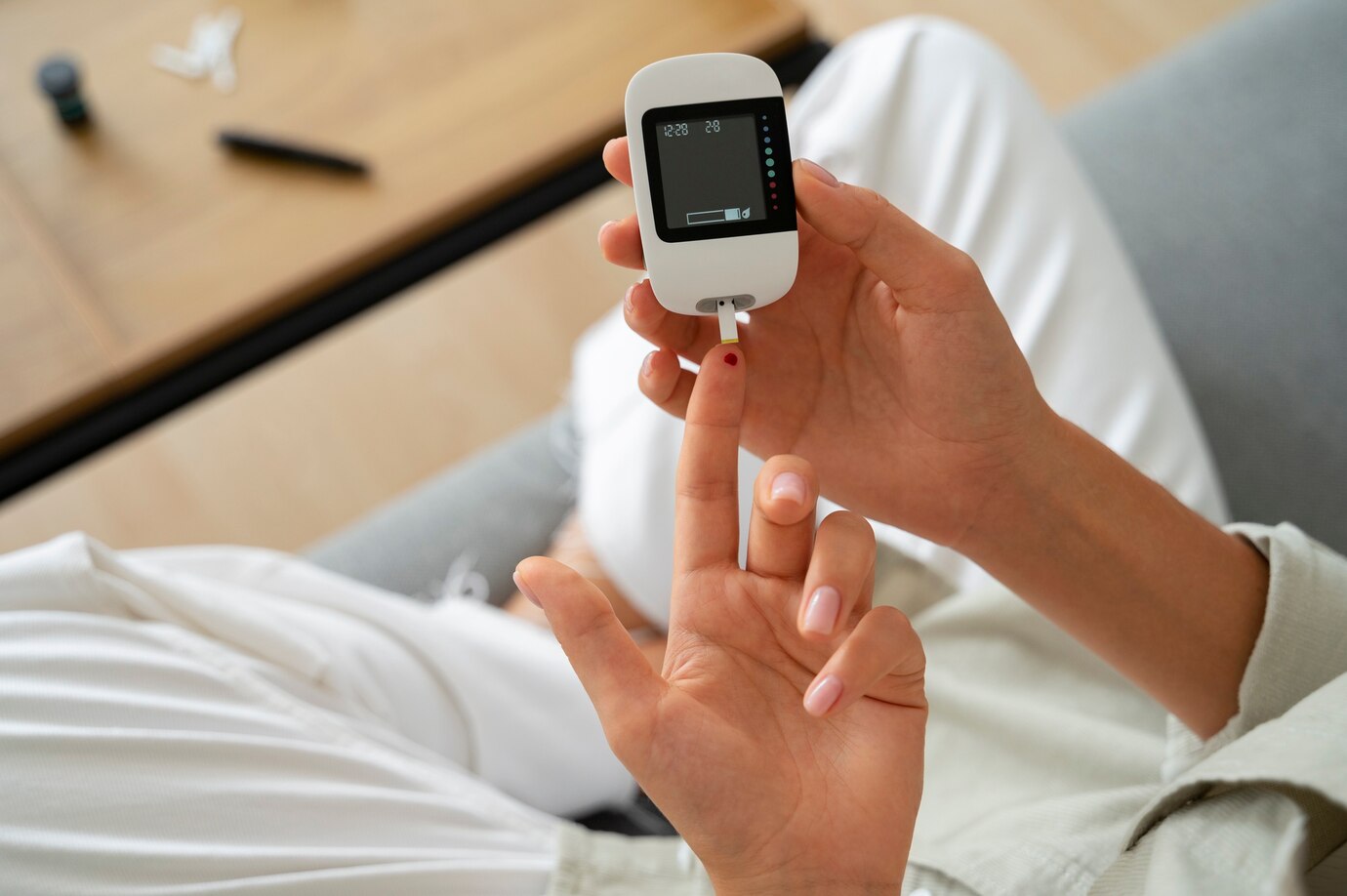How Wearable Tech is Revolutionizing Health & Fitness
Wearable technology has changed how we monitor our health and fitness. Simple step counters, smartwatches, and fitness trackers now use AI. These devices are transforming personal wellness. As technology advances, they track health more accurately. They also inspire healthier living and support preventive care. The Rise of Wearable Technology in Health & Fitness What is

Wearable technology has changed how we monitor our health and fitness. Simple step counters, smartwatches, and fitness trackers now use AI. These devices are transforming personal wellness. As technology advances, they track health more accurately. They also inspire healthier living and support preventive care.
The Rise of Wearable Technology in Health & Fitness

What is Wearable Technology?
Wearable technology includes devices worn on the body that track, analyse, and send health data. This category covers fitness trackers, smartwatches, smart rings, and smart devices.
Why Wearable Tech is Gaining Popularity
Wearable technology is popular for several reasons:
- Convenience – Continuous health tracking without manual input.
- Real-Time Data – Instant updates on heart rate, steps, and calories burned.
- Motivation & Engagement – Challenges and rewards keep users active.
- Preventive Healthcare – Early detection of issues like heart rate changes and oxygen levels.
Key Features of Modern Fitness Trackers
Advanced Health Monitoring
Today’s fitness trackers do more than count steps. They offer advanced health metrics like:
- Heart Rate Monitoring – Continuous tracking for cardiovascular health.
- Blood Oxygen Measurement (SpO2) – Checks oxygen levels for well-being.
- Sleep Tracking – Analyzes sleep quality, duration, and patterns.
- ECG & Blood Pressure Monitoring – Some models provide ECG readings and blood pressure checks.
Integration with Health Apps
Modern fitness trackers sync with Apple Health, Google Fit, and Fitbit’s app. This lets users store and analyze their data easily.
AI and Machine Learning Capabilities
AI insights are shaping smartwatch trends by enabling:
- Personalised Workout Recommendations – AI analyses data to suggest fitness plans.
- Stress & Recovery Analysis – Wearables monitor stress and suggest relaxation tips.
- Predictive Health Insights – Devices can spot health risks based on user data.
Smartwatch Trends: The Future of Wearable Tech
Evolution of Smartwatches
Smartwatch trends have evolved. Initially, they focused on notifications and steps. Now, they offer comprehensive health monitoring.
Key Developments in Smartwatch Trends
- ECG and Heart Rate Variability Tracking – Smartwatches now detect irregular heart rhythms.
- Blood Sugar Monitoring – New tech provides non-invasive glucose tracking.
- Enhanced Battery Life – Smartwatches now last longer without frequent charging.
- AI-Powered Virtual Assistants – Integration with Siri, Google Assistant, and Alexa allows voice control.
- Wearable Payments – Contactless payment features enable seamless transactions.
How Wearable Technology Improves Fitness Performance
Personalised Training Programs
Wearables create tailored fitness plans based on user data. Features include:
- VO2 Max Tracking – Measures oxygen consumption for cardiovascular fitness.
- Guided Workouts – Many wearables offer coaching for various exercises.
- Adaptive Training Plans – Smartwatches adjust intensity based on fatigue and performance.
Real-Time Workout Analysis
Smartwatches and fitness trackers provide real-time feedback on:
- Heart rate zones for effective training.
- Pace and distance tracking for runners and cyclists.
- Calories burned based on activity.
Wearable Technology and Mental Health
Stress and Anxiety Management
New smartwatch trends offer stress management features, such as:
- Heart Rate Variability (HRV) Analysis – Monitors stress and recovery.
- Guided Breathing Exercises – Provides real-time breathing tips to lower stress.
- Mindfulness & Meditation Support – Integration with apps like Calm and Headspace.
Sleep Optimization
Many fitness trackers now provide:
- Sleep Stages Analysis – Identifies patterns in sleep cycles.
- Smart Alarms – Wakes users at the best time in their sleep cycle.
- Caffeine & Lifestyle Tracking – Suggests habits to improve sleep quality.
Wearable Technology for Preventive Healthcare
Detecting Early Signs of Illness
Smartwatches and fitness trackers help spot early health issues, such as:
- Atrial Fibrillation (AFib) Alerts – Some detect irregular heart rhythms.
- Blood Oxygen Saturation (SpO2) Monitoring – Identifies respiratory problems.
- Temperature Sensors – Detect unusual temperature changes for potential illness.
Chronic Disease Management
Wearables assist those with chronic conditions by providing constant monitoring, especially for:
- Diabetics – Track blood sugar levels.
- Hypertension Patients – Smart monitors give real-time readings and alerts.
- Heart Disease Patients – Continuous heart rate and ECG monitoring aids heart health.
Wearable Technology in Women’s Health
Wearable technology addresses women’s health concerns. Many fitness trackers and smartwatches offer:
- Menstrual Cycle Tracking – Helps monitor ovulation and hormonal changes.
- Pregnancy Health Monitoring – Tracks fetal movements and maternal health.
- Hormonal Health Insights – Detects variations in skin temperature and heart rate.
Wearables and Senior Health Monitoring

Wearable technology also helps seniors by providing the following:
- Fall Detection – Smartwatches alert emergency contacts if a fall is detected.
- Heart Rate & ECG Alerts – Continuous monitoring helps catch heart issues early.
- Medication Reminders – Smartwatches notify seniors to take medications.
- Remote Monitoring – Caregivers can track health data remotely for timely intervention.
The Role of Wearable Tech in Workplace Wellness
Encouraging Employee Health
Many companies use wearable technology in wellness programs to promote healthy lifestyles. Features like step challenges help employees stay well.
Reducing Workplace Fatigue
Wearables track signs of fatigue and stress, suggesting breaks and mindfulness exercises. Healthier employees lead to better productivity.
The Future of Wearable Technology in Health & Fitness
Smart Fabrics and Biometric Sensors
One new trend is smart clothing with sensors that monitor health in real time.
Augmented Reality (AR) and Virtual Coaching
In the future, AR coaching with smart glasses could enhance workouts.
AI-Powered Health Predictions
AI will improve wearables’ ability to predict health risks, allowing for earlier preventive measures.
Choosing the Right Wearable Technology
When buying a fitness tracker or smartwatch, consider:
- Compatibility – Ensure it works with your smartphone and apps.
- Battery Life – Choose a device with sufficient battery life.
- Health Features – Pick a wearable with tracking that matches your goals.
- Build & Comfort – Comfortable designs improve usability.
Conclusion

Wearable technology is essential for health and fitness enthusiasts. It offers insights into physical activity, mental health, and overall well-being. The latest smartwatch trends and fitness trackers offer advanced features, making personal wellness exciting. They help track fitness, manage chronic diseases, and monitor stress. Wearable tech empowers people to take charge of their health like never before.